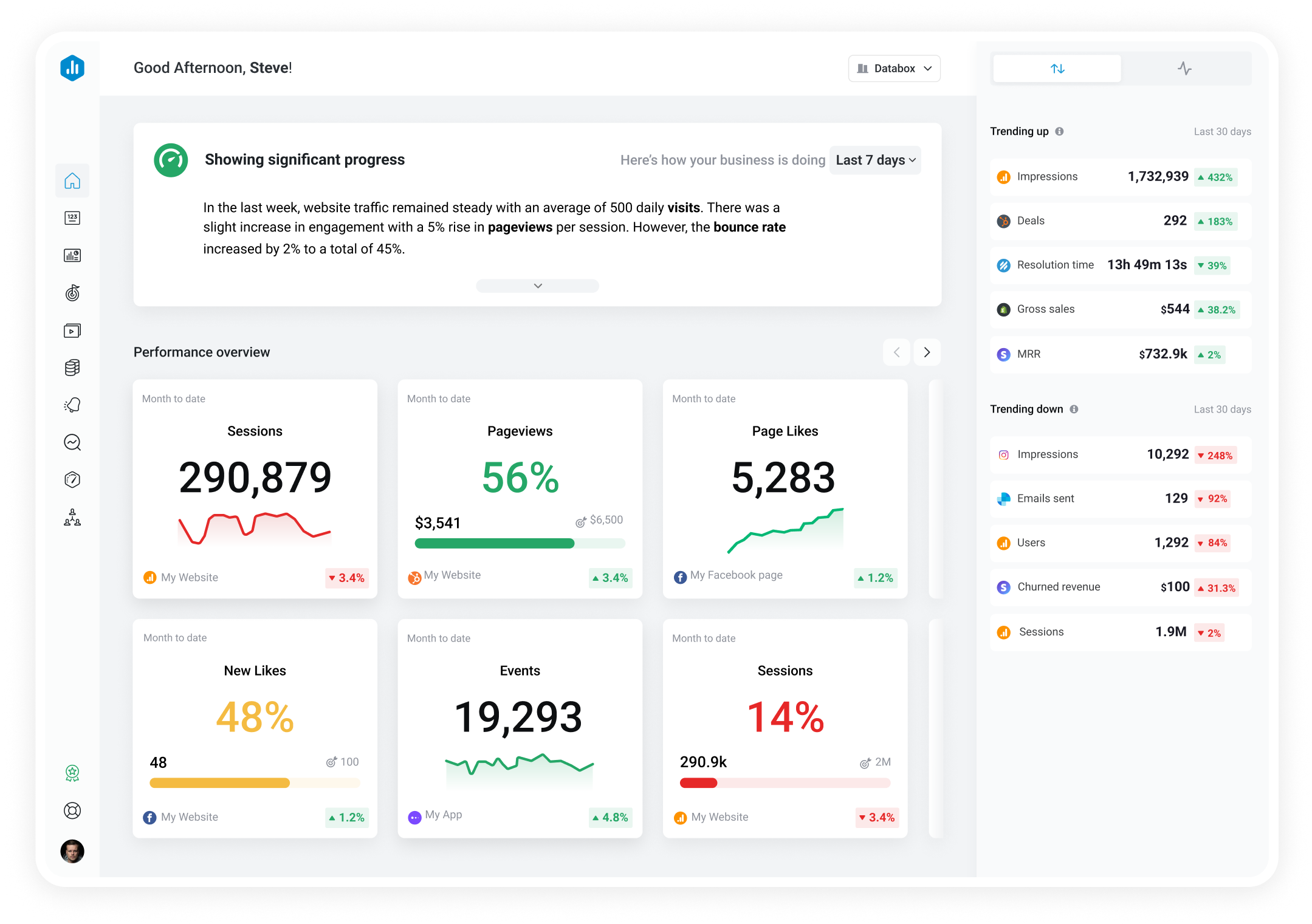Track all of your key business metrics from one screen
GET STARTED
 TikTok Ads
CPA
TikTok Ads
CPA CPA stands for Cost Per Acquisition. It is a metric used in TikTokAds to measure the total cost of acquiring a customer. It is calculated by dividing the total cost of the ad by the number of conversions, such as a purchase, sign-up, or download. A lower CPA suggests that the ad campaign is more effective in acquiring customers.
With Databox you can track all your metrics from various data sources in one place.
CPA stands for Cost Per Acquisition and defines the cost incurred by a marketer or advertiser for a specific conversion that occurs as a result of their marketing efforts. This action could be a purchase, lead generation, email signup, app download, or any other desired outcome that aligns with the marketing campaign’s objectives.
CPA (sometimes referred to as Cost Per Action) allows advertisers to assess the effectiveness of their marketing campaigns. Knowing the cost per acquisition lets them determine how much they need to spend to gain a new customer or lead. Lower CPA is generally more desirable as it indicates that the advertiser is acquiring customers at a lower cost, making the campaign more profitable.
The formula used to calculate CPA is the following:
CPA = Total Cost of Campaign / Number of Conversions or Actions
Here’s an example:
Suppose a company ran an online advertising campaign for a new product. They spent a total of $5,000 on the campaign, which included ad spend, creative production, and other marketing expenses. During the campaign, they tracked their conversions, and it resulted in 200 purchases of the new product.
In this case:
CPA = $5,000 (Total Cost of Campaign) / 200 (Number of Conversions)
CPA = $25 per acquisition
This means the company spent, on average, $25 for each customer acquisition or purchase made as a result of their marketing efforts.
What you’ll consider a good CPA depends on where you run ads, your industry, and more.
For example, for B2B marketing, CPAs tend to be higher compared to B2C due to the complexity of B2B sales cycles. A good CPA for B2B campaigns could range from $50 to $500 or more, depending on the industry and product or service.
On the other hand, in the mobile app industry, a good CPA may be around $2 to $5 per app install, or a tad higher for more competitive app categories.
Based on the latest benchmarks provided by AdBraze, the average CPA across all industries for Facebook ads in 2022 was $18.68. According to this study, technology was the most expensive industry to advertise, while education had the most successful and least expensive ads.
Wordstream’s data shows that the average CPA for Google Ads range from $44 to $143, depending on the industry.
Keep up with future trends and instantly compare your performance to companies just like yours, regardless of your industry. Join our Benchmark Groups—it’s anonymous and free for everyone!
How to Improve CPA?
You can implement various strategies to improve your CPA:
More resources to help you improve:

Used to show a simple Metric or to draw attention to one key number.

Used to illustrate numerical proportions through the size of the slices.

Used to show comparisons between values.
Databox is a business analytics software that allows you to track and visualize your most important metrics from any data source in one centralized platform.
To track CPA using Databox, follow these steps:
 Goals
Goals Scorecards
Scorecards Metric Digest
Metric Digest Metric Builder
Metric Builder Data Calculations
Data Calculations Performance Screen
Performance ScreenGet a high level overview of the performance of your TikTok Ads account.

Enhance your social media advertising and dive into performance metrics for your Facebook, TikTok, LinkedIn, and X ads—all in one easy-to-use template. Perfect for understanding what’s driving results and optimizing your ad spend.




High CPAs suggest that the marketing campaign or advertising efforts are not as efficient as they could be. The campaign might not be effectively reaching the target audience, or the messaging and offers may not resonate well with potential customers. It’s essential to analyze the marketing strategy, targeting, ad creatives, and landing pages, and conduct A/B testing to identify areas for improvement and cost reduction.
Several factors can contribute to a high CPA (Cost Per Acquisition) in marketing campaigns, such as:
To address a high CPA, marketers should continually monitor their campaigns, analyze performance data, and make data-driven decisions to optimize targeting, creatives, landing pages, and conversion processes.
